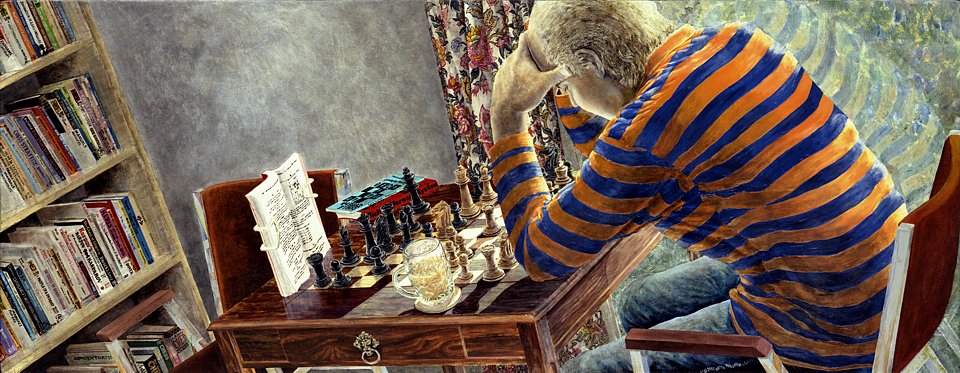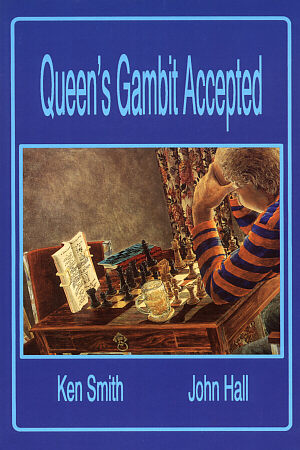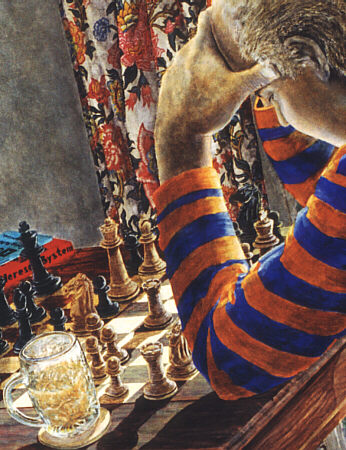|
|

|
|
CONCENTRATION
© 1993 Keith Halonen oil on panel 46×18 in / 117×46 cm $ 45,000 US |

|
« CLICK to contact the artist |





|
CLICK » to order this print |

|
|
YOU ARE IN THE CHESS PAINTINGS GALLERY
CLICK THE SHORTCUT ICONS ABOVE TO VIEW MORE PAINTINGS |
|
Serious players typically study chess more than they play. Chess originated in 5th century India and Persia, and Arab players in the 9th century were the first to treat chess as if it were a science. They began to record and catalog opening move sequences and evaluate positional strengths based on actual practice rather than happenstance or speculation. The Arabs created mansubat, endgame problems intended for exercising and improving their mating skills. They even recognized certain positions, ta`biyat, which were considered exceptionally powerful. Rather than play all the moves leading up to a position which both players wished to attain anyway, games were often started from such positions as the mutalahiq, the mujannah, or the double mujannah.
Since the advent of moveable type, over 30,000 distinct chess titles have been published. New chess books are now published at the rate of about one every other day, and modern chess students have eagerly embraced chess learning software and the advantage of the superior search processes offered by personal computers. I create a chess-related painting every few years. This is one of a pair of companion pieces with nearly identical imagery. It is the smaller of the two and I consider its counterpart, Square One, my masterpiece for the 90's. It was my intent with these artworks to convey some idea of the possible depth of chess study (hence the elaborate library) and the intensity of concentration required by a dilligent student of the royal game. |

|

|
|
|
Detail from
CONCENTRATION
|
|
Devotion to detail can be an important aspect of realism. Many artists balk at the task of painting complicated print patterns such as that seen on the curtain in this painting. I begin with a tracing of the actual pattern from a piece of the drapery. I don't paint thread-by-thread but I do like to contribute more than merely adequate visual info to induce the viewer's brain to accept the image as real. Devotion to detail distinguishes hypermodern realism from approaches that merely suggest pattern.
For example, the chess library in this painting is a modern library but it would be expedient to depict it as if it were a few collections of matching leather-bound classics. It's a colorful contemporary mishmash of mostly flexi and paperback books related by a common theme, chess. This is a real book shelf, one which might be in any modern chess player's home. The Queen's Gambit Accepted, 1995 Chess Digest, might be on such a bookshelf. The Queen's Gambit is a popular chess opening. Technically, it isn't a true gambit. The pawn offered by White can be recouped in a couple moves. A true gambit offers a pawn, sometimes even a piece, in exchange for something less tangible but more important; mobility, file or rank control, superior position of some sort. The Accepted variations begin with the capture of the offered pawn. The Queen's Gambit Declined is by far the more popular response, but players of any opening are wise to familiarize themselves with the potentials and possibilities for both sides of the board. |
———————— GALLERIES ————————









|